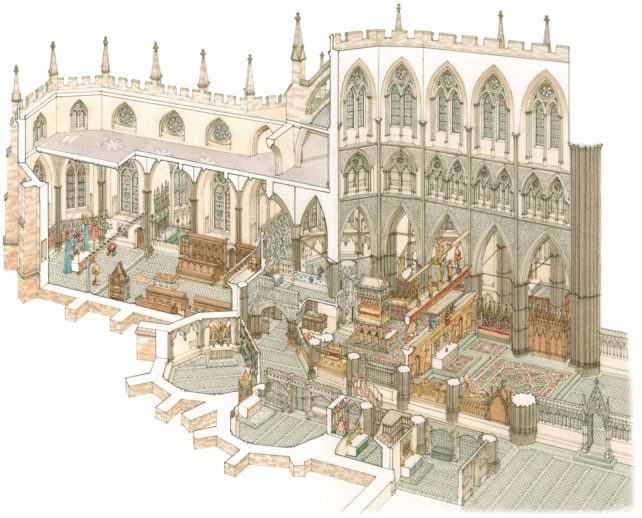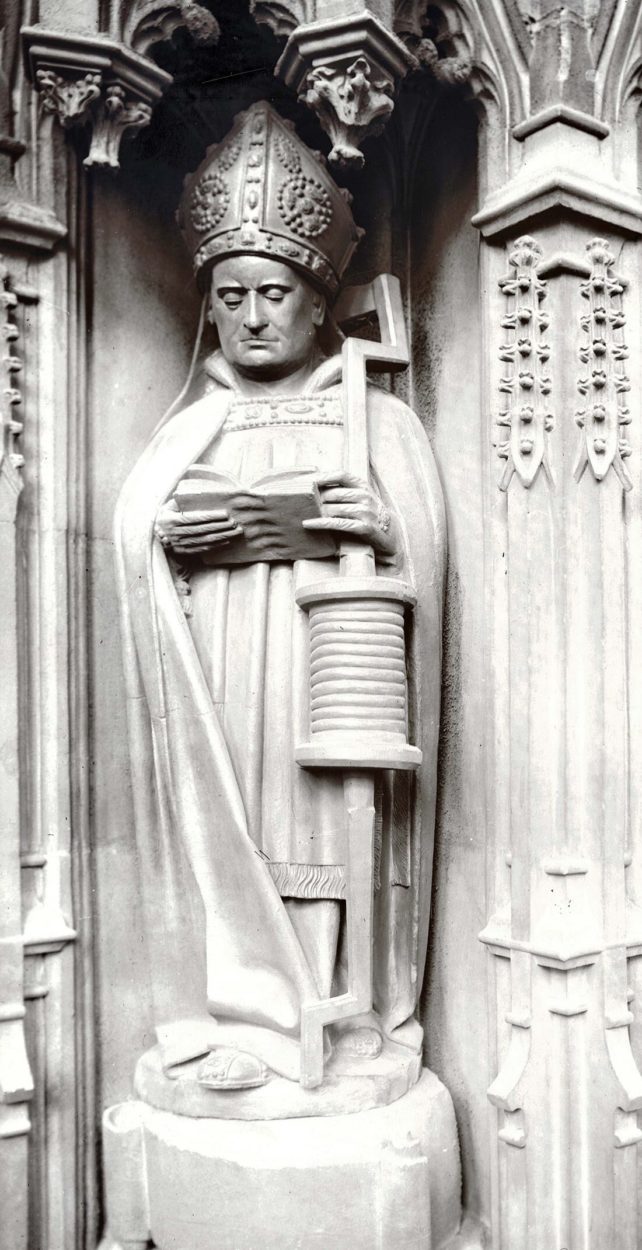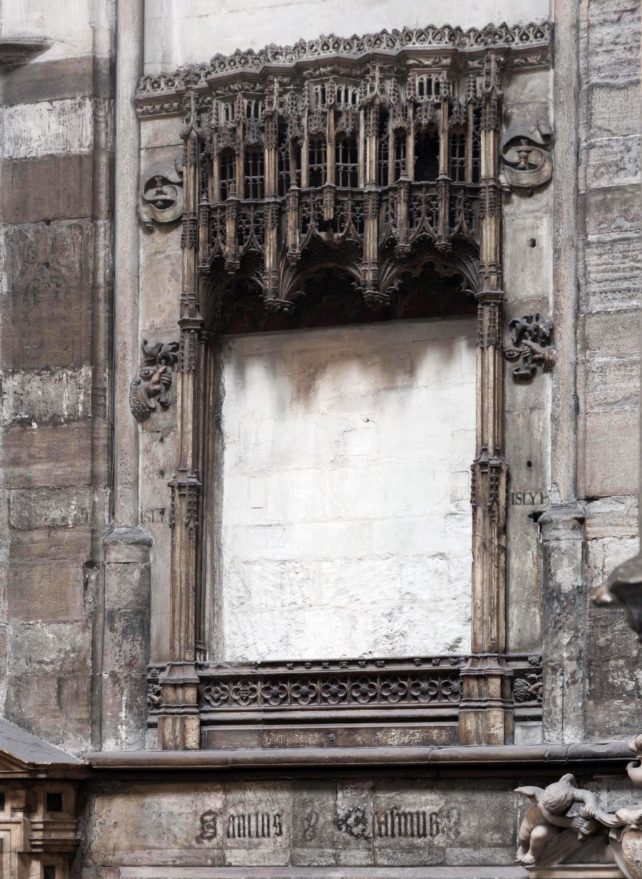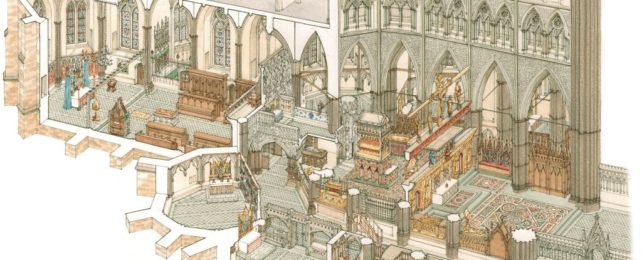Westminster Abbey has served as a coronation, wedding, and burial site for the royalty of England and Britain for nearly a millennium.
Consecrated in 1065 CE, the magnificent structure is one of the world's most famous buildings – but it hasn't always existed in its current form. It's been subject to the whims and fashions of the nobility, changing like a haunted house whose halls can never be relied upon.
And new research suggests that one such vanishing section was a grisly chapel, a sacred space dedicated to the royal cult of Saint Erasmus of Formia, a martyr killed by slow disembowelment.
This chapel was demolished in 1502, and very little trace of it remains. Yet, according to Abbey archivist Matthew Payne, and John Goodall, a member of the Westminster Abbey Fabric Advisory Commission, it may have been a site of worship used by England's 'White Queen' Elizabeth Woodville, wife of Edward IV.

Among the evidence included in their new paper is a newly rediscovered, centuries-old document in the form of a royal grant, and an alabaster frame that was once part of an ornamental screen known as a reredos.
"The White Queen wished to worship there and it appears, also, to be buried there as the grant declares prayers should be sung 'around the tomb of our consort' (Elizabeth Woodville)," Payne explains.
"The construction, purpose and fate of the St Erasmus chapel therefore deserves more recognition."
It's unclear when exactly the chapel was built. The first mention of it is found in a grant made to the abbey by Edward IV. In it, he writes that the grant is for a chantry "in a chapel of Saint Erasmus newly built by the queen, annexed to the chapel of Saint Mary of the monastery, for the good estate of the king and queen and for their souls after death."

Saint Erasmus, also known as Saint Elmo, was a bishop who lived in the 3rd century CE and fell afoul of authorities. He was reportedly variously tortured, imprisoned, tortured again, burned alive (which, according to the legends, he survived), imprisoned and tortured again, and ultimately killed by having his entrails wound slowly round a windlass. Good times. He's considered a patron of sailors, children, and those suffering abdominal distress.
A cult surrounding this saint was established in the 15th century CE, and became popular across the country's south in the latter half of the century, with altars and images dedicated to him at a number of prominent churches. He also appeared in sculptures and paintings.
In the 1470s, the royal family's devotion to Saint Erasmus was strong. Historians can only speculate as to why; perhaps it had to do with the protection of their children, or a sea voyage safely taken by the king in 1471.
"But the dedication at Westminster was of particular significance, for the abbey was one of only two religious houses in England to boast a relic of the saint," the researchers write. "According to the monk historian John Flete, writing in the 1440s, a tooth of Saint Erasmus was among the relics supposedly given to the abbey by King Offa."
It was also a burial site. In 1481, the 8-year-old Anne Mowbray, child bride to Elizabeth's son Richard, was interred there. (When the Saint Erasmus chapel was destroyed by Henry VII to make room for the Lady Chapel, her coffin was relocated and lost. It would not be rediscovered until 1964.) A Sir Thomas Hungerford of Down Ampney was also listed as buried there in 1494, although it's not clear why.
Elizabeth and Edward IV were, ultimately, buried at Saint George's Chapel in Windsor Castle.

Today, the alabaster reredos frame is all that visitors to Westminster can see of the chapel. It's exquisitely, elaborately carved, and historians speculate that it once framed a gruesome painting of Saint Erasmus' martyrdom, hanging behind the chapel's altar.
The presented evidence, the researchers say, suggests that further investigation into this lost piece of English history is warranted.
"Very little attention has been paid to this short-lived chapel," Goodall says.
"It receives only passing mention in abbey histories, despite the survival of elements of the reredos. The quality of workmanship on this survival suggests that investigation of the original chapel is long overdue."
The research has been published in the Journal of the British Archaeological Association.
